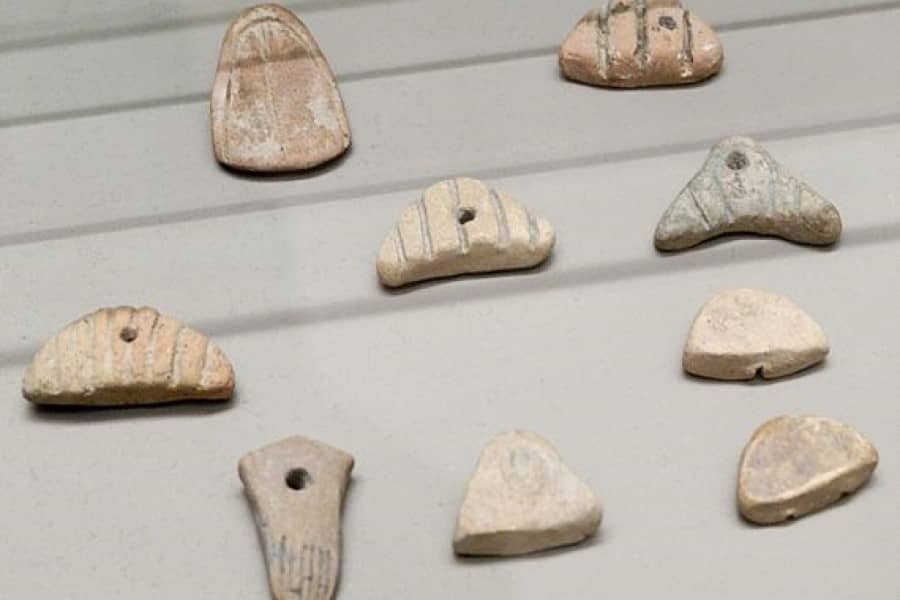New! Amazing Self-Paced Courses You Can Start Every Month!
The history of accounting is intricately connected to the history of currency and the transition from bartering and property ownership to money as currency. The exact date of the transition from bartering to money predates written history, so their specific details and origins are unknown. In fact, the first recorded form of form of currency only dates back to around 7,000 BCE in Mesopotamia, which is also about 3,500 years before writing was even invented. The complexities of this are all the more interesting considering that historians believe numbers to have only been conceived in Sumeria, Mesopotamia in 4,000 BCE. This is unsurprising given that it served as the first known complex civilization and remained the heart of civilization for millennia.
The first instance of known record-keeping is believed to be a 20,000-year-old tally stick known as the Ishango bone which was discovered in 1950 in the Belgian Congo. Anthropologists believe that it was used to record either the number of livestock or the amount of produce that the owner had acquired. However, its exact usage and the meaning of the etchings are pure speculation.

Around 5,000 BCE saw the introduction of the first known form of monetary currency known as the Mesopotamian shekel. The global discovery of coins across Europe, Asia and North Africa indicates that coins made from various rare metals such as bronze, silver and gold, had become the dominant form of transactions by 1250 BCE. The first proof of mints was dated between 650 and 600 BCE in Asia minor. These were born out of necessity, as the Lydian and Ionian governments needed them to pay their armies.
As writing was only invented around 3400-3100 BCE again in Mesopotamia, the early systems involved carved symbols with different shapes representing different categories of items such as sheep or wheat, while the size of the item and number of etchings on the symbol represented the amount. These tokens were only used to record amounts. It was only when writing was invented that ownership and terms could be recorded as well.
Therefore, it was only between 3500-2000 BCE, still in Mesopotamia, that ‘Scribes’ came into being. This was in response to bourgeoning economic demand that came with the rise of city states between 3200-3100 BCE. They filled the role of bookkeepers and were responsible for managing the finances of the elite classes and private firms. It was a highly prestigious profession, as literacy and education were extremely rare for most of human history.
They were also responsible for recording all financial transactions and deals between individuals and businesses. As such, they were often located at the gates of the city for accessibility. They composed the contracts on clay tablets, detailed the transactions, names of involved parties and all other terms of the agreement The parties would then sign their names on the legally binding document. These signatures would usually be in the form of a personal stamp. These stamps would usually feature the names of their owners, as well as religious symbols with pictures and the name of the deities that the owner worshiped.
Although later, accounting and writing also developed separately in other parts of the world in similar ways. For instance, the earliest recorded form of writing in China dates back to 3,600 BCE during the Shang dynasty, the earliest known accounting records in Egypt date back to 3000 BCE, and the oldest writing samples in Southern Mexico and Guatemala were dated to around 500 BCE.
The Roman empire was the next significantly influential contributor to accounting. This is because it was Caesar Augustus, the first Roman emperor, who established imperial account books to keep track of taxes and to publicize his personal spending. However, the scope extended further than that, as he also instituted accounting as a way of monitoring the state treasury, expenditures, population demographics such as slaves and free men, among other use cases.
The first known renditions of the double ledger system were both traced to the 11th century. The first was adopted by Jewish traders and bankers in the Cairo, while the other main system, known as the ‘Jama Nama’ system was used in India. It is believed that the Italians were exposed to it due to the Jewish traders acting as intermediaries between their Muslim and Roman customers. There are some who suggest that the Jewish system may have even been in effect from the early-medieval period.
The earliest record of the double-entry bookkeeping system in Italy was by Amatino Manucci, who applied it to a ledger he worked on from 1299-1300. However, although he did not invent double-entry accounting, Luca Pacioli is attributed as being the ‘father of modern accounting’ due to his being the first person to publish it and disseminate it as part of his monumental first work, Summa de arithmetica, geometria, Proportioni et proportionalita that was published in 1494. This work was designed as a mathematical textbook for use in schools in Northern Italy and provides the main mathematical concepts that were known at the time, including basic algebra, arithmetic, basic geometry and accounting. Part of this included outlining the double-entry accounting system that Venetian merchants had used during the Italian Renaissance period. He is also attributed as being the first person to outline a system of debits, and credits in ledgers.
This is significant as it was the merchants of the Renaissance period who adopted the Arabic numerals that we continue to use today, over the previous Roman Numeral system. This is because it was the first comprehensive mathematical textbook that was produced for commercial international sales. Hence, his work was sold to many European countries, leading many to adopt the doble-entry system, which lead to it being stand practice even now in the West, as well as in many other parts of the world.